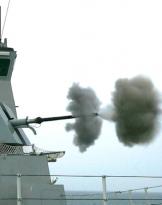In the XNUMXs, close collaborative relationships began between the Italian Royal Navy and the Zionist movement which culminated, after the Second World War, in a secret collaboration between personnel of the former Italian Royal Navy (who had fought in the Xª Flottiglia MASlisten) and the nascent Israeli navy.
The Pre-War Relations between Zionism and Fascist Italy
In 1923 the "Betar" was born in Riga, Latvia, a youth movement belonging to the "Zionist Revisionist Movement", founded by Vlad Yevgenyevich Zhabotinsky (following photo), with the aim of encouraging the emigration of young European Jews to Palestine to contribute to the birth of a new Jewish state, Israel.
Zionist revisionism differed from other types of Zionism in asserting the Jewish right to sovereignty over the whole of Eretz Yisrael, identified as Mandatory Palestine and Transjordan.
The young European Jews, once they returned to Palestine, were employed on agricultural farms (kibbutz) and at the same time enrolled for at least two years in special brigades both to defend their new settlements from Palestinian attacks and to participate, in support of other Zionist movements to the creation of the new Jewish state.
 In reality, the transfers of young Jews to Palestine had already begun at the end of the 1870th century, following the persecutions suffered by the Jews in Russia and, in XNUMX, the first Mikve' Israel agricultural school was founded north of Jaffa.
In reality, the transfers of young Jews to Palestine had already begun at the end of the 1870th century, following the persecutions suffered by the Jews in Russia and, in XNUMX, the first Mikve' Israel agricultural school was founded north of Jaffa.
To counter the rampant problem of anti-Semitism in Europe, the First Zionist Congress was held on 29 August 1897 in Basel, during which the Zionist Organization was founded.
In 1917, during World War I, the Ottoman Empire collapsed leaving many political issues unresolved. With the Balfour Declaration, the British undertook to facilitate the establishment of a "National Home" in Palestine, specifying that "the civil and religious rights of the non-Jewish communities of Palestine" should be guaranteed.
In practice, promising the pre-existing Arab population the recognition of self-determination for the creation of an "Arab state" (with deliberately undefined borders) which would have incorporated approximately all the territory between Egypt and Persia, including part of Palestine .
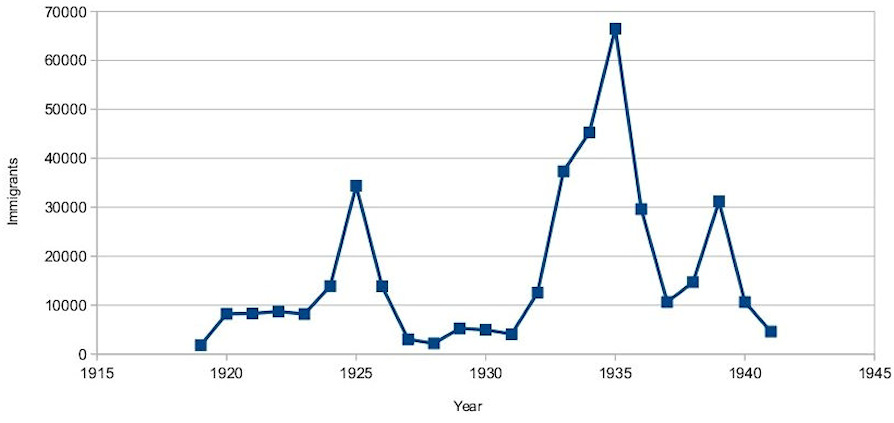
(Jewish immigration data from 1919 to 1941 from The Holy Land Herald, Movements of a People- Immigration Statistics for Jewish Immigrants to Palestine, Aidan McDonald)
In 1920, in the course of post-war negotiations, the League of Nations awarded Britain the Mandate of Palestine. Strengthened by the previous promises, a situation of tension was created between the Jews and the Arab populations (Muslim and Christian), particularly felt by the Zionist movement which aimed at the creation of a new Jewish state.
 The birth ofHaganah
The birth ofHaganah
In the same year was founded theHaganah, a paramilitary force whose original purpose was to defend Jewish settlements against Arab attacks (suffered during the 1920, 1921, 1929 riots and during the 1936-1939 Arab revolt in Palestine), under the control of the Jewish Agency, the The official government body responsible for the Jewish community of Palestine during the British Mandate.
The organization was fueled by the exodus of Jews from other countries organized and organized in various European countries by Zionist youth movements. Among them the aforementioned "Betar", founded in Riga (Latvia) in 1923, forming an integral part of the "Zionist Revisionist Movement".
The naval schools of the Bites
Il Bites he created both in Palestine and in the countries where he was active, schools to train instructors and trained military personnel; among them, in 1930, the first training school for personnel to be employed during naval operations was established in Tel Aviv. Subsequently, between 1935 and 1939, two naval schools were created, one in Latvia (where about 50 students were trained) and one in Italy, in Civitavecchia, intended to fill the cadres of the future Navy of the State of Israel. Civitavecchia was chosen because, since the XNUMXs, there had been a good maritime school which prepared many young people to start up in the Italian merchant marine.
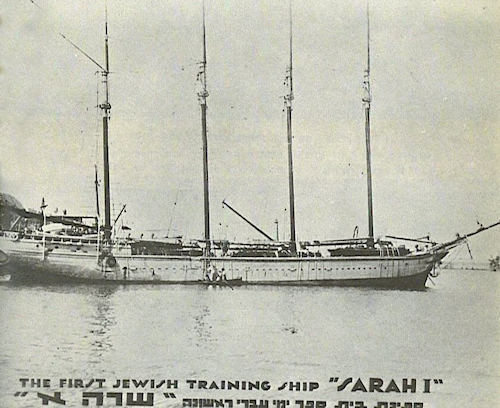
With the help of the fascist regime, the Zionist movement turned to Italy to create the foundations of Israel's future navy, both military and merchant. A common interest as Italy also saw a glimmer of collaboration with the future State of Israel, at the time under British control.
The Jewish Nautical School, which grew up inside the Civitavecchia Nautical School, was operational until 1938, and trained 153 students from all over Europe, Palestine and South Africa, destined to become the future commanders of the Israeli navy. In particular, the young cadets were trained by former officers of the Royal Navy who, in addition to theoretical teaching, guided the students in practical activities aboard a 500-ton motor sailer, "I Quattro Venti", later renamed with the name of " Sarah I” (photo).
The then group leader Avram Blass, who later became admiral of the Israeli Navy, recalled that their training was equal to that of the Italian students and on their uniforms they wore an anchor, the menorah (the seven-branched candelabrum) and the littorio bundle.
It all began in 1933 when the Italian Foreign Ministry (Mussolini) argued that a strong Jewish state would be in Italy's interest, and saw in the Revisionists potential ideological partners of Fascist Italy. This political orientation facilitated the creation within the Maritime School of Civitavecchia of the aforementioned Jewish Nautical School, financed by Lloyd Triestino and located at the port, on the Molo San Teofanio, in the ancient Roman dock. Nicola Fusco, a capable captain of the merchant marine and well-known scholar of maritime arts and sciences, was appointed director of the School, establishing a close and warm relationship between the Jewish cadets and the fascist establishment of which he was a part.
 The excellent student relationship in the school was highlighted in a sad event. In May 1935 one of the students, Abram Strausberg from Danzig, had a fatal accident after diving from the rocks of the rampart. The boy was buried with a sad ceremony, in which all the authorities solemnly participated, in a corner of the municipal cemetery, to the right of the main entrance, where in ancient times other Jews residing in Civitavecchia had been buried. A marble engraving is still present in memory of him: "student of the maritime school of Civitavecchia, enraptured by the dream of serving the sea of Israel".
The excellent student relationship in the school was highlighted in a sad event. In May 1935 one of the students, Abram Strausberg from Danzig, had a fatal accident after diving from the rocks of the rampart. The boy was buried with a sad ceremony, in which all the authorities solemnly participated, in a corner of the municipal cemetery, to the right of the main entrance, where in ancient times other Jews residing in Civitavecchia had been buried. A marble engraving is still present in memory of him: "student of the maritime school of Civitavecchia, enraptured by the dream of serving the sea of Israel".
This excellent relationship between the two communities was confirmed in the official publication of the Italian maritime professional schools, the Bulletin of the Consortium of Professional Schools for the Maritime Maestranza, which stated: “… in agreement with all the competent authorities it has been confirmed that the opinions and political and social inclinations of the revisionists are known and that they are absolutely in agreement with the fascist doctrine. Therefore, as our students they will bring Italian and fascist culture to Palestine”.
The school of Civitavecchia therefore established a strong link with the Italian Royal Navy which was interrupted only in 1938, with the insane racial laws, openly opposed by Fusco and eminent personalities such as D'Annunzio; it was a set of legislative and administrative provisions against people of the Jewish faith which specifically prevented students of the Jewish religion from following courses at the School of Civitavecchia.
The ships of the Aliyah Beth
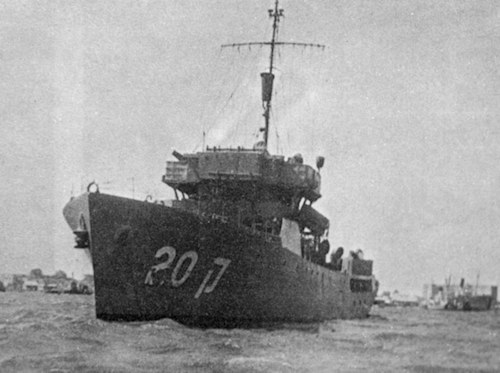 The naval training of the cadres of the nascent Israeli navy continued mainly in Palestine, in the naval school in Tel Aviv, but also in England and the United States, always financed by the rich local Jewish lobbies.
The naval training of the cadres of the nascent Israeli navy continued mainly in Palestine, in the naval school in Tel Aviv, but also in England and the United States, always financed by the rich local Jewish lobbies.
During the Second World War some of Civitavecchia's former students enlisted in the Royal Navy while others were employed on the ships of the “Aliyah Bet”, the organization dedicated to the clandestine repatriation of Jews to Palestine.
On May 29, 1948, two weeks after the creation of the State of Israel (May 15), the provisional government created the Israel Defense Forces which would replace theHaganah which, in 1941, had perfected its organization with the creation of the Palmac, the first framework of the Israeli Armed Forces.
The "Naval Defense Force" was envisaged in the Defense Forces, which included, in addition to the men of the Palyam (the naval section of the Palmac):
– the sailors of the Bites (many formats in Italy);
– Jewish personnel from the Merchant Navy and the Royal Navy.
The Mossad in Italy
They were delicate years on a global level that led to the cold war between the two blocs, with the United States and Russia as major protagonists, followed, willingly or unwillingly, by the countries aligned with them. Israel was a politically complicated young state, with international ties not always clearly clear. Under the pressure of US Jewish lobbies, the United States decided to covertly support the Mossad, the secret intelligence agency of the State of Israel which had branches in all the countries of the world. The latter was also well introduced in Italy, tolerated by the then Italian government which tried to maintain an ambiguous policy in order not to antagonize the Arab world.
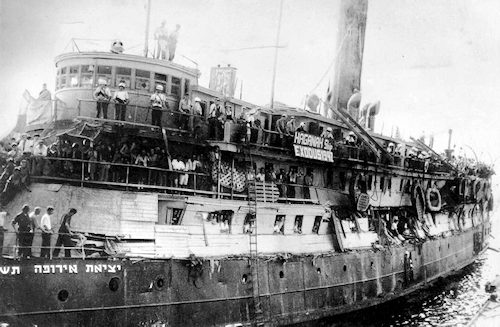 In Italy there were still many UN camps where Jews from all over Europe were gathered, supported by theAliah Bet and by the Italian and American authorities. A situation, certainly not well seen by the British Mandate in Palestine, which lasted until the birth of the State of Israel in 1948 and tried to openly hinder clandestine migration. Nevertheless, the numbers were significant: in the period 1934-1948 about 125.000 Jews were moved by sea despite the many obstacles by sea and land posed by the stiff opposition of the British Government.
In Italy there were still many UN camps where Jews from all over Europe were gathered, supported by theAliah Bet and by the Italian and American authorities. A situation, certainly not well seen by the British Mandate in Palestine, which lasted until the birth of the State of Israel in 1948 and tried to openly hinder clandestine migration. Nevertheless, the numbers were significant: in the period 1934-1948 about 125.000 Jews were moved by sea despite the many obstacles by sea and land posed by the stiff opposition of the British Government.
The Jewish gathering camps were located in minor ports along the Italian coast, from which ships departed for Palestine. The major port was undoubtedly that of La Spezia, where a Mossad operational base, located in Bocca di Magra, organized one of the most important departures, embarking in May 1947 on the ship "Trade Winds / Tikva" over 1.414 refugees bound for Palestine.
Another ship, the President Warfield, was set up in the Olivo construction site in Portovenere to accommodate five thousand people. The ship assumed the name of "Exodus" (photo), a ship made famous by Otto Preminger's 1960 film of the same name. Another starting point was located at the Formia port, in the Gianola promontory, where a secret base had been created Israeli known as "The Hill".
July 18 1947
The ship Exodus, whose real name was President Warfield, in 1947 was commissioned to transport in great secrecy Jews who were leaving illegally from Europe to reach the biblical Land of Israel. At 2 a.m. on July 18, the British contacted Exodus to try to persuade the captain to abort the voyage to Palestine. The request was ignored and the vessel was attacked and rammed in the bow by the British navy. There were several wounded and three dead: one British soldier, and two passengers of the Exodus. The battle lasted about four hours but when the British began to use firearms, the ship's captain decided to surrender to avoid further casualties. The illegal immigrants were taken prisoner and sent to concentration camps in Cyprus and then taken back to France.
(Go on)
Read: "The secret relations between the Zionist groups and the Italian Navy (part 2/3)"
Read: "The secret relations between the Zionist groups and the Italian Navy (part 3/3)"
Sources
Achille Rastelli, report presented at the AIDMEN Conference held in Rome on 17 November 2007 at the Confraternity of San Giovanni Battista de' Genovesi see The Italian contribution to the Aliyah Beth ships 1945-1948 – Articles – AIDMEN
Renzo de Felice, "History of Italian Jews under Fascism", Turin, 1997
Leone Carpi, How and where the Israeli Navy was reborn. The Bethar Maritime School in Civitavecchia, 1965
Ada Sereni, The clandestines of the sea. Jewish emigration to the land of Israel from 1945 to 1948, Edizioni Mursia, 1973
NYTimes
Photo: web / Yossef Tamir's image collection
(article originally published on https://www.ocean4future.org)











